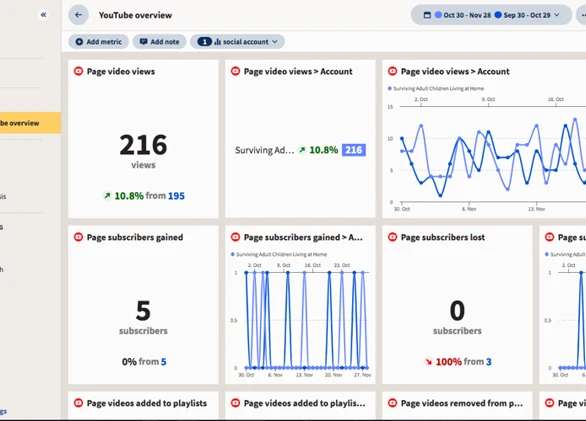With the rise of vlogging as a popular form of content creation, many individuals and businesses are leveraging this platform to engage with their audience. However, creating a successful vlog goes beyond just filming and uploading videos. Analyzing your vlog’s performance using analytics is crucial to understanding what is working well and where there is room for improvement. In this blog post, we will explore how to effectively analyze your vlog’s performance using analytics tools and metrics.
Understanding Analytics for Vlogs
Before diving into the specifics of analyzing your vlog’s performance, it’s essential to understand the key analytics metrics that are relevant to vlogging. These metrics can provide valuable insights into how your audience is engaging with your content and help you make data-driven decisions to optimize your vlog strategy.
Key Metrics to Analyze
1. View Count
The view count is one of the most basic metrics that can indicate the popularity of your vlog. It represents the number of times your video has been viewed by your audience. Tracking the view count over time can help you identify trends and understand which videos are resonating with your viewers.
2. Engagement Rate
Engagement rate measures how actively your audience is interacting with your vlog. This metric includes likes, comments, shares, and subscribes. A high engagement rate indicates that your content is compelling and resonating with your viewers.
Tools for Analyzing Vlog Performance
1. YouTube Analytics
YouTube Analytics is a powerful tool provided by YouTube that offers detailed insights into your vlog’s performance. You can track metrics such as watch time, traffic sources, audience demographics, and more. This data can help you optimize your content strategy and maximize your vlog’s reach.
2. Google Analytics
Google Analytics is another valuable tool for analyzing your vlog’s performance, especially if you have a website or blog where you host your vlogs. You can track metrics such as referral traffic, user behavior, and conversion rates to understand how your vlogs are driving traffic and engagement.
3. Social Media Insights
If you promote your vlogs on social media platforms, it’s essential to leverage the analytics tools provided by these platforms. Platforms like Facebook, Instagram, and Twitter offer insights into engagement metrics, audience demographics, and reach. By analyzing these metrics, you can tailor your social media strategy to boost your vlog’s performance.
Optimizing Your Vlog Strategy

1. Content Analysis
By analyzing the performance metrics of your vlogs, you can gain valuable insights into what type of content resonates with your audience. Look for patterns in your most popular videos and identify common themes or topics that drive engagement. Use this information to create more of the content that your audience loves.
2. Audience Segmentation
Understanding your audience demographics is crucial for tailoring your vlog content to meet their preferences. Use analytics tools to identify the age, gender, location, and interests of your viewers. Segment your audience based on these demographics and create targeted content that resonates with each segment.
3. Experimentation and A/B Testing
Analytics can also help you run experiments and A/B tests to optimize your vlog strategy. Test different video lengths, thumbnails, titles, and calls-to-action to see what drives the best results. Analyze the performance of each variation and iterate based on the data to continuously improve your vlogs.
Measuring Success and Setting Goals
Once you have analyzed your vlog’s performance and optimized your strategy, it’s important to set measurable goals to track your success. Whether your goal is to increase views, boost engagement, or grow your subscriber base, use analytics to monitor your progress and make data-driven decisions to achieve your objectives.
Conclusion
Analyzing your vlog’s performance using analytics is essential for understanding how your content is resonating with your audience and optimizing your vlog strategy. By tracking key metrics, leveraging analytics tools, and making data-driven decisions, you can improve the quality of your vlogs, engage with your audience more effectively, and achieve your content creation goals.